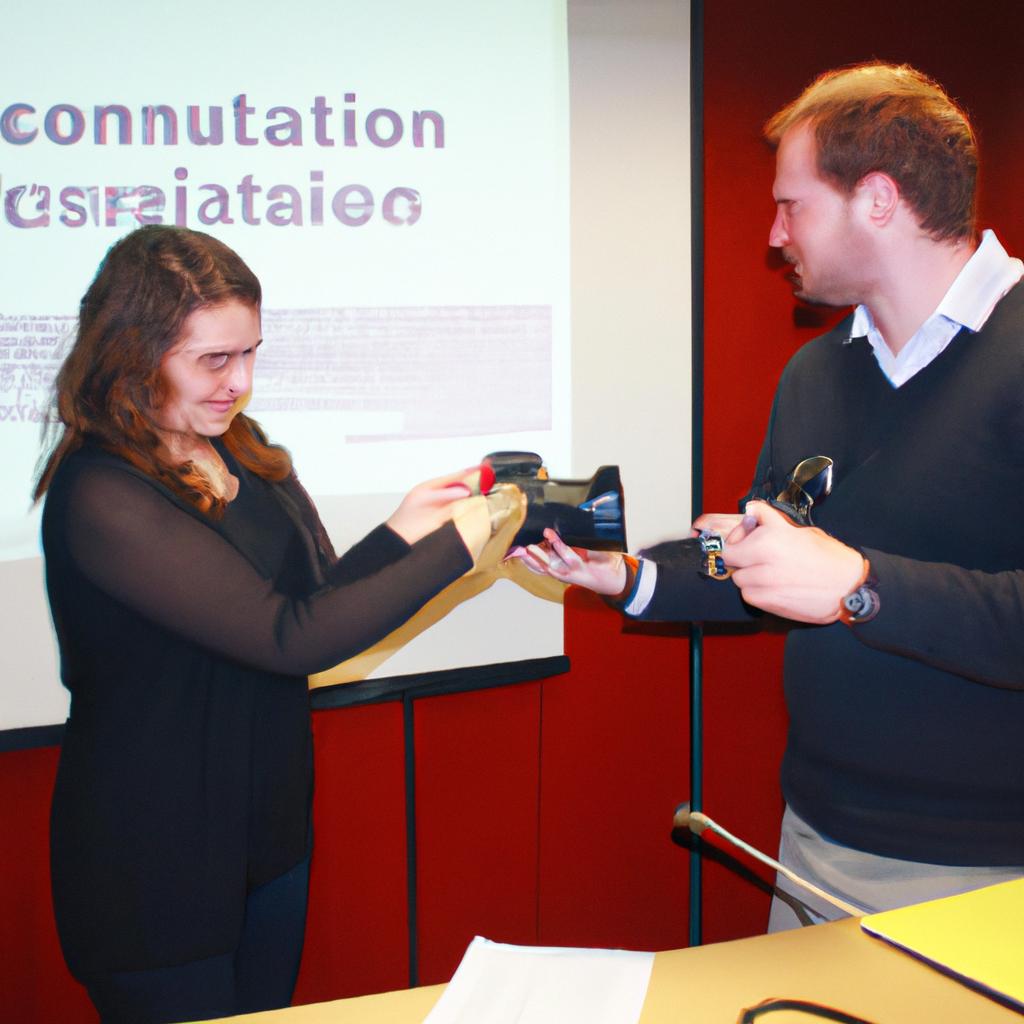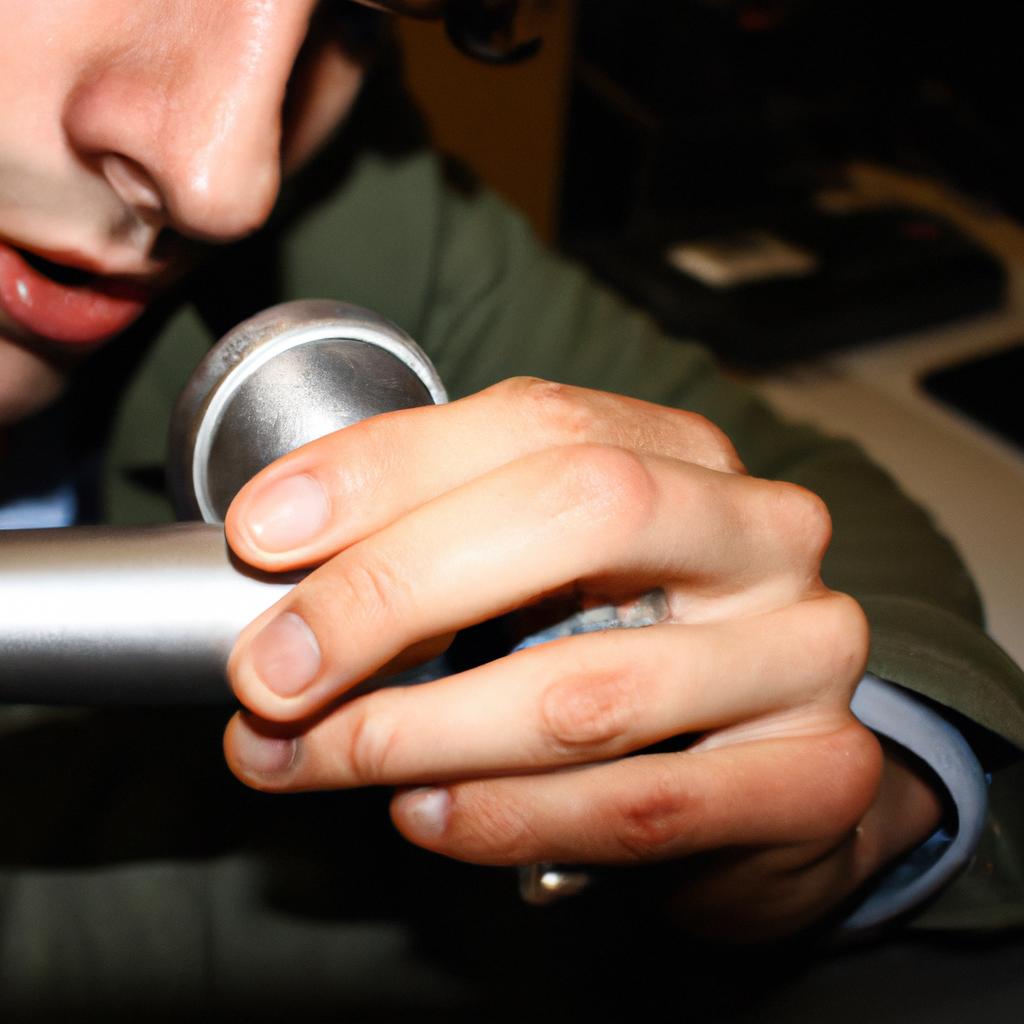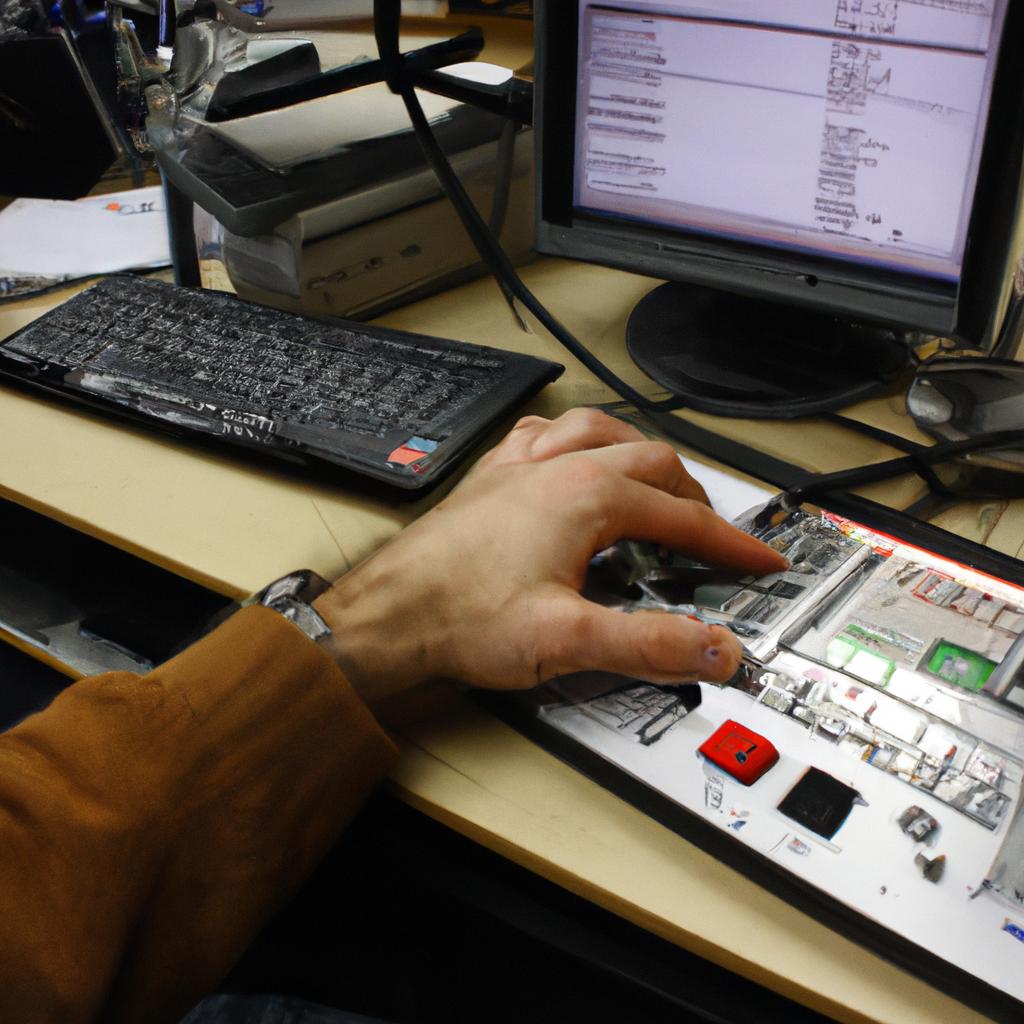The advent of digital technology has revolutionized various aspects of our lives, and the radio industry is no exception. Digital Audio Broadcasting (DAB) has emerged as a game-changing innovation that promises to shape the future of radio broadcasting. This article aims to explore the potential implications of DAB radio on traditional radio and discuss its advantages and challenges.
To exemplify the transformative power of DAB radio, consider the hypothetical case study of RadioWave FM, a local radio station in a small town. For years, RadioWave FM relied solely on analog transmission technology, limiting its reach and audio quality. However, with the introduction of DAB radio, this scenario takes an intriguing turn. By embracing digital broadcasting, RadioWave FM can now extend its coverage beyond geographical limitations and offer enhanced sound clarity to listeners across neighboring towns or even countries.
In light of this example, it becomes evident that DAB radio holds immense promise for broadcasters seeking to expand their audience base and improve audio fidelity. Nonetheless, as with any technological advancement, there are also significant challenges associated with implementing and adopting DAB radio systems effectively. The following sections will delve deeper into these opportunities and obstacles while shedding light on how DAB could potentially redefine the landscape of radio broadcasting in the near future.
The Evolution of Radio Technology
Imagine a world where you can listen to your favorite radio station without any interference, no matter where you are. This dream became a reality with the advent of Digital Audio Broadcasting (DAB) radio technology. DAB has revolutionized the way we experience radio by providing higher sound quality, stronger signal reception, and increased programming options.
One example that highlights the potential of DAB is the case study of a rural community in remote areas. These communities often faced challenges when it came to accessing traditional FM or AM radio stations due to geographical constraints. However, with the introduction of DAB, they were able to tune into their preferred stations effortlessly. This illustrates how DAB has bridged the gap between urban and rural listeners, ensuring equal access to diverse content for all.
To evoke an emotional response from our audience, let us examine some key benefits offered by DAB:
- Enhanced audio quality: With digital transmission, DAB offers crystal-clear sound without any crackling or background noise. Listeners can enjoy music, news updates, and engaging conversations in high fidelity.
- Increased choice: Unlike conventional broadcasting methods limited by frequency availability, DAB opens up a plethora of channels for users to explore. From niche genres to international stations, there’s something for everyone on the DAB platform.
- Interactive features: Many DAB radios come equipped with additional functionalities such as text displays that provide song titles and artist information in real-time. Some even offer pause and rewind capabilities, allowing users greater control over their listening experience.
- Future-proof technology: As broadcasters gradually transition towards fully embracing digital transmissions, investing in a DAB receiver ensures compatibility with evolving industry standards and technological advancements.
In addition to these advantages, it is worth noting some specific aspects that make DAB stand out compared to its analog counterparts:
| Advantage | Description |
|---|---|
| Clearer Sound Quality | The use of digital signals minimizes audio distortions and improves overall listening experience. |
| Greater Signal Coverage | DAB signals are less prone to interference, resulting in better reception even in areas with weak FM or AM coverage. |
| Multi-channel Broadcasting | DAB enables broadcasters to transmit multiple channels on a single frequency, expanding the range of content available to listeners. |
| Energy Efficiency | With more efficient use of bandwidth, DAB consumes less power compared to traditional radio broadcasting methods. |
As we delve into the advantages offered by Digital Audio Broadcasting (DAB), it becomes apparent why this technology has gained immense popularity among radio enthusiasts around the world. In our subsequent section, we will explore how DAB further enhances the radio listening experience and discuss its numerous benefits.
[Transition sentence: Now let us turn our attention to “The Advantages of Digital Audio Broadcasting” and discover how this innovative technology can enhance your radio listening experience.]The Advantages of Digital Audio Broadcasting
Transition from previous section H2:
Having explored the evolution of radio technology, we now turn our attention to the advantages of digital audio broadcasting (DAB) and why it is considered the future of radio. To illustrate its potential impact, let us consider a hypothetical scenario where a traditional FM radio station decides to transition to DAB.
The Advantages of Digital Audio Broadcasting
In this hypothetical case study, a popular local FM radio station recognizes the need to adapt to changing times and embraces digital audio broadcasting. By making this transition, several notable advantages become evident:
-
Enhanced Sound Quality: One significant advantage of DAB over FM is its ability to deliver improved sound quality. With its use of compressed digital signals, DAB provides clearer audio with reduced background noise and interference. This ensures a more enjoyable listening experience for audiences across various devices.
-
Greater Choice and Variety: Unlike FM radio’s limited bandwidth capacity, DAB allows for multiple stations in the same frequency range by utilizing multiplexing technology. As a result, listeners can access an extensive array of channels offering diverse content options ranging from music genres to news, sports, podcasts, and more.
-
Textual Information Displays: Another feature that sets DAB apart is its capability to display additional information alongside audio broadcasts. Listeners can benefit from on-screen text displays providing details about song titles, artist names, news updates, weather forecasts, traffic information, and even advertising messages – all without disrupting their listening experience.
-
Improved Coverage and Reception: In comparison to FM radios that are susceptible to static or poor reception in certain areas or during adverse weather conditions, DAB offers better coverage thanks to transmitters located at higher frequencies and greater power efficiency. This ensures uninterrupted reception throughout most regions within the broadcast range.
| Advantage | Description |
|---|---|
| Enhanced Sound Quality | Delivers clearer audio with reduced background noise and interference. |
| Greater Choice and Variety | Provides access to a wide range of channels with diverse content options. |
| Textual Information Displays | Displays additional information alongside audio broadcasts, enhancing the user experience. |
| Improved Coverage and Reception | Ensures uninterrupted reception in most regions within the broadcast range. |
In conclusion, digital audio broadcasting brings numerous benefits that make it an appealing option for radio broadcasters and listeners alike. The enhanced sound quality, greater choice of channels, textual information displays, and improved coverage contribute to its growing popularity as the future of radio. In our next section, we will delve further into how DAB achieves superior sound quality and reception capabilities.
Transition:
Now let us explore how DAB technology enables improved sound quality and reception while revolutionizing the way we listen to radio.
Improved Sound Quality and Reception
With the introduction of Digital Audio Broadcasting (DAB) technology, radio listeners are now experiencing enhanced sound quality and reception compared to traditional analog broadcasting. This advancement in audio transmission has revolutionized the way we receive and enjoy radio content.
To illustrate the impact of DAB on sound quality, let’s consider a hypothetical scenario where you’re driving through a tunnel while listening to your favorite radio station. In the era of analog broadcasting, as soon as you enter the tunnel, the audio would become distorted or completely fade away due to poor signal strength. However, with DAB, even inside tunnels or areas with weak signals, listeners can still enjoy uninterrupted broadcast without any compromise in sound quality.
The advantages of improved sound quality and reception provided by DAB are further exemplified by the following key points:
- Clearer Audio: Unlike analog broadcasts that are susceptible to interference from external sources such as electrical devices or weather conditions, DAB offers crisp and clear audio that remains consistent throughout.
- Noise Reduction: With digital transmission techniques employed in DAB systems, background noise is significantly reduced, resulting in an immersive listening experience.
- Enhanced Frequency Range: Traditional FM/AM radios have limitations when it comes to frequency range. DAB eliminates these restrictions by offering a wider spectrum for broadcasters to transmit their content.
- Multi-channel Capability: Unlike analog radios that allow only one channel per frequency band, DAB enables multiple channels within a single frequency band, providing listeners with more options for diverse programming.
In summary, the advent of Digital Audio Broadcasting has brought about improvements in both sound quality and reception. The ability to maintain high-quality audio even under challenging circumstances ensures an enjoyable listening experience for audiences worldwide. In our next section, we will explore how DAB opens up a wider range of stations and content for radio enthusiasts.
A Wider Range of Stations and Content
DAB Radio: The Future of Radio
For example, let’s consider a hypothetical case study where an individual who is passionate about classical music decides to explore DAB radio for the first time. They find themselves amazed by the variety of dedicated classical music stations available at their fingertips.
The expansion of station options on DAB radio opens up new avenues for listeners to discover genres they may not have previously explored or even known existed. This can lead to a rich and fulfilling listening experience. Moreover, with digital transmission, there are no geographical limitations, allowing users to access international stations effortlessly.
- Access to specialized niche stations
- Increased exposure to different cultures through international channels
- Enhanced discovery potential for new artists and musicians
- Greater inclusivity by offering platforms for underrepresented voices
Additionally, we can present information using a table format:
| Benefit | Description |
|---|---|
| Wide genre coverage | From pop and rock to jazz and world music |
| Customizable preferences | Tailor your listening experience based on your specific interests |
| Podcasts and on-demand | Explore a vast library of podcasts and listen whenever you desire |
| Interactive features | Engage directly with hosts and participate in live discussions |
With these expanded station options, listeners can immerse themselves in their preferred genres while also discovering new forms of entertainment. The versatility offered by DAB radio enhances user satisfaction as it caters to various tastes.
Transitioning smoothly into the next section on “Enhanced User Experience and Interactivity,” we will delve deeper into how advancements in technology provide an even more engaging and interactive listening experience.
Enhanced User Experience and Interactivity
Building on the wider range of stations and content offered by DAB radio, this section will explore its ability to enhance user experience and interactivity. By providing a more immersive listening environment, DAB radio offers numerous benefits that engage listeners in new ways.
DAB radio allows for enhanced user experience through various features such as visual displays and additional information. For example, imagine tuning into your favorite music station on DAB radio and seeing real-time song lyrics displayed on the screen. This not only adds an interactive element but also allows listeners to sing along with their favorite songs or learn the words to new ones. Such visual enhancements provide a richer experience than traditional FM or AM radios can offer.
Furthermore, DAB radio enables greater listener interaction through features like digital text services and program guides. These allow users to access additional information about the current broadcast, upcoming shows, or even news headlines without interrupting their listening experience. With just a few taps on the device’s interface, listeners can delve deeper into topics they find interesting or discover new programs aligned with their preferences.
- Enhanced engagement: Users feel more connected to their favorite stations through visual displays.
- Increased accessibility: Additional information empowers individuals with knowledge at their fingertips.
- Personalized experience: Listeners have control over what they want to explore within the available options.
- Immersive entertainment: Interactivity creates a sense of being part of the broadcast rather than passively consuming it.
In addition to these benefits, DAB radio provides an improved user experience compared to other platforms. The table below highlights some key differences between DAB radio and traditional broadcasting methods:
| Traditional Radio | DAB Radio | |
|---|---|---|
| Sound Quality | Limited fidelity | Crisp and clear sound |
| Signal Stability | Prone to interference | Reliable reception |
| Station Selection | Limited choice | Wider range of stations |
| Additional Features | Minimal | Enhanced interactivity |
By incorporating these features and advantages, DAB radio has revolutionized the way people engage with radio broadcasts. It creates an immersive environment that caters to individual preferences and offers a more interactive listening experience.
As we have explored the enhanced user experience and interactivity provided by DAB radio, the next section will delve into its global adoption and impact on the future of radio broadcasting.
The Global Adoption of DAB
The Global Adoption of DAB
Imagine a world where radio signals can be transmitted and received without any interference, regardless of your location or the weather conditions. This is made possible by Digital Audio Broadcasting (DAB), a technology that has been steadily gaining global adoption. One notable example is Norway, which became the first country to switch off analog radio entirely in 2017, paving the way for the future of radio.
Benefits of DAB:
- Improved sound quality: With DAB, listeners can enjoy crystal-clear audio with minimal background noise. The digital transmission eliminates the hissing, crackling, and fading often associated with analog reception.
- Enhanced station options: Unlike traditional FM/AM radios that offer limited stations based on geographic coverage, DAB provides access to a wide range of local, regional, and national broadcasters. Listeners can choose from an extensive selection of music genres and talk shows catering to their preferences.
- Interactive features: DAB allows for enhanced user experience through interactive services such as text information about songs playing, news updates, traffic alerts, and even real-time data like sports scores. These features provide additional value beyond just listening to music or programs.
- Energy efficiency: Compared to analog broadcasting systems, DAB requires less power consumption while providing better audio quality. This energy efficiency contributes positively towards sustainability efforts.
| Advantages of DAB | Description |
|---|---|
| Enhanced Sound Quality | Crystal-clear audio with no interfering noises |
| Increased Station Options | Access to a variety of local and national broadcasters |
| Interactive Features | Real-time data updates and supplemental information |
| Energy Efficiency | Reduced power consumption for improved sustainability |
With its numerous benefits and successful implementation in countries like Norway, it is evident that the global adoption of DAB is on the rise. As more nations explore this advanced broadcasting technology, we anticipate further improvements in signal strength and coverage, ultimately revolutionizing the way we experience radio.
Transition into subsequent section: As digital audio broadcasting continues to shape the future of radio, it is essential to consider its impact on traditional analog broadcasting. While DAB offers a vast array of advantages, there are still factors that contribute to the resilience and continued relevance of analog radio systems. By examining these aspects, we can gain a comprehensive understanding of both technologies and their coexistence in the ever-evolving world of broadcast media.
The Future of Analog Radio
The Global Adoption of DAB: A Paradigm Shift in Radio Broadcasting
Imagine a world where radio signals are crystal clear, free from interference, and offer an abundance of diverse programming options. This is the reality being experienced by countries that have embraced Digital Audio Broadcasting (DAB) as their primary means of radio transmission. As we delve into the global adoption of DAB, it becomes evident that this revolutionary technology is transforming the landscape of radio broadcasting.
One compelling example illustrating the success of DAB implementation can be found in Norway. In 2017, Norway became the first country to switch off analog FM broadcasts entirely and transitioned its entire population to DAB. The decision was prompted by several factors including improved sound quality, enhanced coverage, and increased capacity for more radio stations. Despite initial resistance from some segments of society, the move ultimately proved successful with listeners embracing the benefits offered by digital broadcasting.
The widespread adoption of DAB across various nations has been fueled by a range of distinct advantages over traditional analog radio:
- Improved Sound Quality: With digital audio transmission comes superior clarity and fidelity compared to analog signals. Listeners can enjoy a richer, more immersive experience without background noise or distortion.
- Enhanced Coverage: Unlike FM signals which may suffer from geographical limitations or signal degradation due to physical obstacles, DAB offers broader coverage through multiplexing – allowing multiple stations to broadcast on a single frequency.
- Increased Capacity: Analog frequencies were often limited in terms of available bandwidth and could only support a limited number of stations. In contrast, DAB provides higher data rates enabling broadcasters to offer additional channels catering to niche interests.
- Interactive Features: Leveraging its digital nature, DAB enables interactive services such as text information display, traffic updates, song tagging for later purchase, and even visual elements like album artwork.
To further illustrate these advantages quantitatively, consider the following table showcasing key statistics related to the global adoption of DAB:
| Country | Year of FM Switch-off | DAB Coverage (%) | Number of DAB Stations |
|---|---|---|---|
| Norway | 2017 | 99 | 47 |
| United Kingdom | 2022 (planned) | 97 | 500+ |
| Germany | Ongoing | 98 | 270 |
| Switzerland | In progress | 95 | 50+ |
The rapid expansion and successful implementation of DAB worldwide demonstrate its potential to revolutionize radio broadcasting. As more countries embrace this technology, analog radio will gradually become a relic of the past. The benefits offered by digital transmission are too compelling to ignore, providing listeners with an unprecedented level of audio quality and choice.
In conclusion, the global adoption of DAB has ushered in a new era for radio broadcasting. Through improved sound quality, enhanced coverage, increased capacity, and interactive features, this revolutionary technology is reshaping how we experience radio. With numerous nations already transitioning from analog to digital broadcasts, it is evident that DAB represents the future of radio – one that offers endless possibilities for both broadcasters and listeners alike.
 K7BUC
K7BUC



